Cucumbers are actively used in various diets. Low-calorie fresh vegetables can successfully include them in various diet systems, arrange "cucumber" fasting days. At the same time, not many people know how many calories are contained in pickles, and whether they can replace fresh fruits with respect to the benefits for the body.
Content
- 1 Calorie content, composition and useful properties of pickles
- 2 Differences in the nutritional and energy values of other types of cucumbers
- 3 How much does it cost to eat pickles per day
- 4 How long can pickles be stored?
- 5 The benefits of cucumbers for weight loss
- 6 Contraindications and harm pickles
- 7 Salting recipes for low-calorie crispy cucumbers
- 8 Answers to Common Questions
Calorie content, composition and useful properties of pickles
Cucumber refers to low-calorie foods. For 100 g of salty fruit, only 11 kcal. This amazingly low calorie content is due to the chemical composition of the vegetable, which contains approximately 1.7 g of carbohydrates, and even less protein and fat - about 0.3 g and 0.2 g, respectively. The numbers may vary slightly depending on the variety of the plant and the conditions of its cultivation. The weight of dietary fiber - 0.8 g, ash - 3.9 g, organic acids - 0.7 g. In addition, cucumber consists of water at 95-97%.
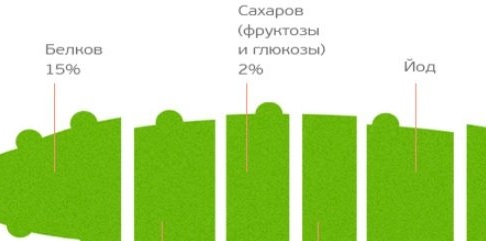
Vitamins A, B1, B2, C, E, PP are present in cucumbers. Trace elements are represented by iron and iodine necessary for the circulatory system, which takes part in all metabolic processes. There are more macronutrients in vegetables - potassium, calcium, magnesium, phosphorus, and especially a lot of sodium. Salts of this component help pregnant women to tolerate toxicosis more easily.
As a result of fermentation during salting of cucumbers, lactic acid is formed under the influence of the sugars contained in them. Thanks to it, the food used in food reduces the lipid content in the blood, stimulates blood circulation, and normalizes high blood pressure. The beneficial bacteria that enter the intestinal tract heal the digestive system.
Differences in the nutritional and energy values of other types of cucumbers
The use of fresh, lightly salted and pickled cucumbers, as well as cucumber juice has a different effect, since the proportions of the components contained in them differ.
Fresh
The energy value of fresh cucumbers is higher (14-15 kcal) than salted. However, the difference is so insignificant that, taking into account other nutritional qualities, it is fresh fruits that are more often used in different diets. Carbohydrates (2.5 g) prevail over proteins (0.8 g) and fats (0.1 g). Eating pulp without a peel reduces the calorie content of the product, but at the same time its nutritional value.
 You may be interested in:
You may be interested in:Lightly salted
Salted Cucumbers at a lower calorie content (12-13 kcal) compared with fresh greenbacks, they contain almost the entire set of useful substances (vitamins, fiber, antioxidants, etc.).They saturate the brine with potassium and magnesium salts, which helps in case of violations of the gastrointestinal tract and a hangover. BZHU (proteins, fats, carbohydrates) in 100 g of the product - 0.6 / 0.1 / 1.3 g.
Pickled
Pickles improve appetite by stimulating the work of the stomach. They work especially well with constipation, having a mild laxative property. However, compared with other types of product, they have a lower concentration of nutrients due to the use of acetic acid.
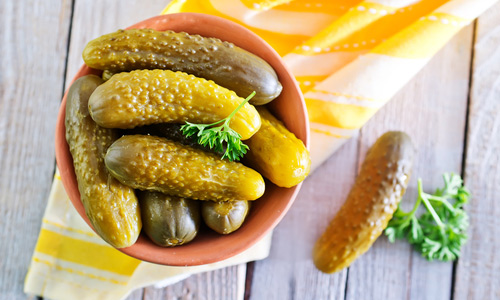
Cucumber Juice
All useful minerals and vitamins of a fresh vegetable are also present in freshly squeezed juice, which normalizes blood pressure, improves eyesight, and helps with rheumatism and gout. The ratio of BJU in fresh is 0.8 / 0.1 / 2.5 g, and the total calorie content is 14 kcal.
How much does it cost to eat pickles per day
The daily norm of a salt vegetable for an adult is 100 g, for a child - 50 g. Since the sodium content increases many times during the preparation process when salt is added, this factor should be taken into account, since salt also enters the body with other types of food.
These standards make up for the daily need for sodium, and its excess retains fluid in tissues and cells. A person begins to worry about thirst, swelling appears. Enhanced kidney function is trying to remedy the situation through the active production of urine and filtration of saline excess. The body should not be subjected to such loads, because in case of malfunctions, not only the work of the kidneys may be disturbed, but also blood pressure will increase, the excitability of the nervous system will increase, and the work of the heart will deteriorate.
Doctors recommend such norms for pregnant women:
- 2 small cucumbers per day in the first trimester;
- 1 cucumber per day in the II trimester;
- closer to childbirth - a complete failure.
It is especially not recommended to abuse fruits affected by vinegar or other organic acids, since their excess leads to various inflammatory processes in digestion and triggers stone formation.
How long can pickles be stored?
Shelf life of store and home preservation are different. Store products can be stored for 3 years, but if it contains little acetic acid - 2 years. First of all, you need to pay attention to the manufacturer's recommendations, to correlate the current date with the date of release of the food product.
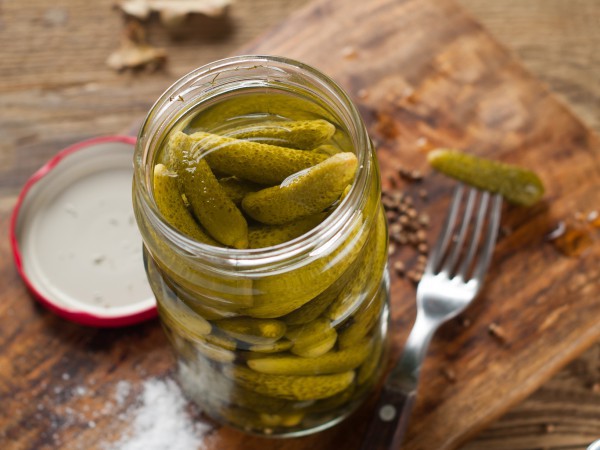
Home preservation is recommended to be consumed during the calendar year. Salted cucumbersthat were rolled into cans without the addition of vinegar, it is advisable to eat earlier than pickled. It is better if no more than 8-9 months pass from the moment of their procurement.
With prolonged storage, the fruits lose the beneficial substances contained in them. Over time, favorable conditions for a dangerous neurotoxin, botulinum toxin, are created in home preservation. It provokes serious poisoning, which can result in death.
The benefits of cucumbers for weight loss
Despite the fact that cucumber is a low-calorie product, it satisfies hunger well (stretches the walls of the stomach and a feeling of fullness appears). The structured water contained in it (it is also called “living”) acts as a natural adsorbent. With regular use of the vegetable, the body is cleansed and the accumulated toxins are removed.
Fiber, carbohydrates, protein, vitamins, phosphorus, potassium, calcium, magnesium and other beneficial substances contribute to normal digestion. Tartronic acid inhibits the conversion of carbohydrates to fats. Its effect is enhanced during exercise.
Fiber and potassium contribute to the normalization or, in some cases, weakening of the stool, which allows effortless cleaning of the intestines from the accumulation of gases and harmful substances.
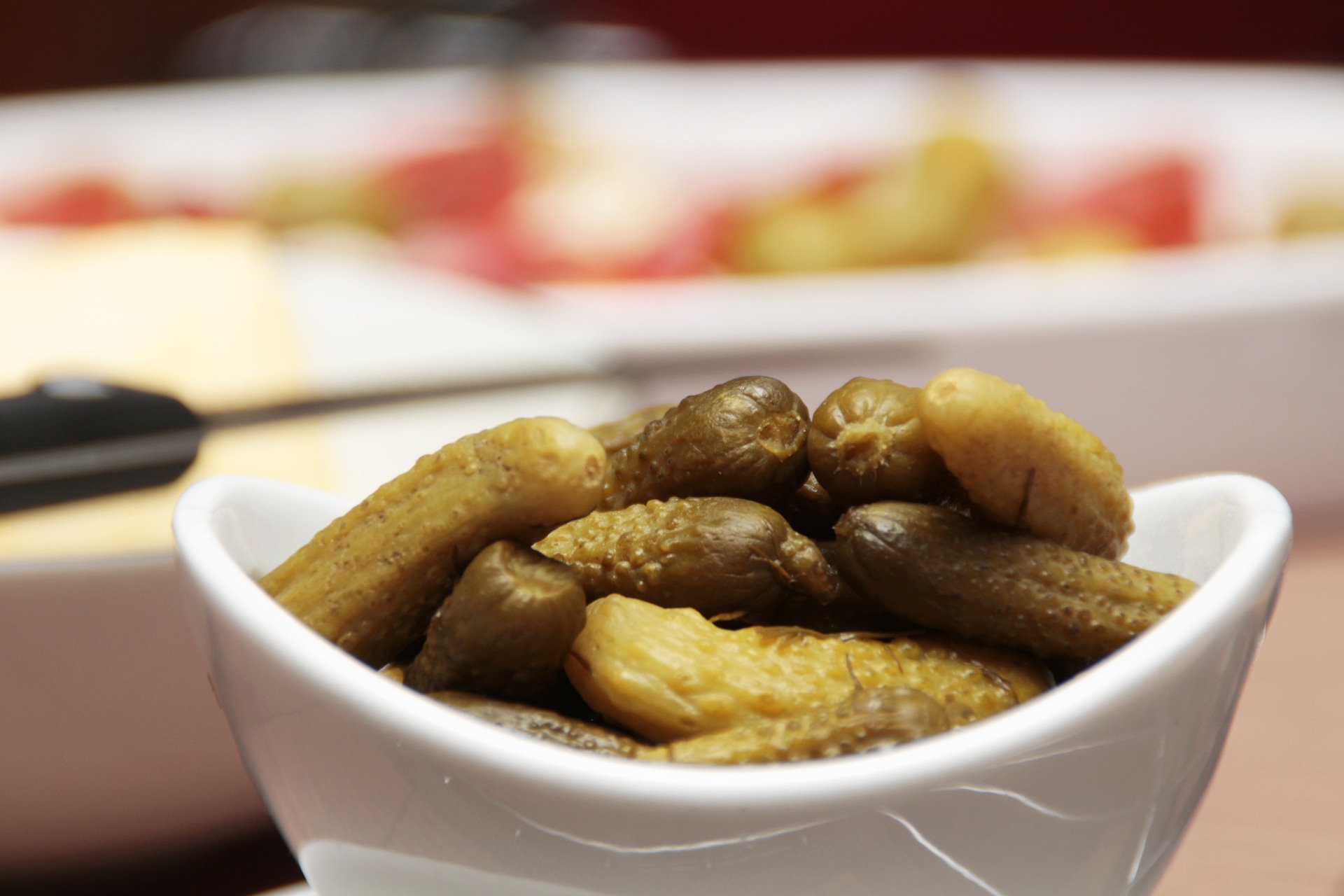
Eating cucumbers along with foods that are high in protein makes it easier to absorb. In this case, the pancreas does not experience a large load.
Contraindications and harm pickles
Pickled cucumbers can harm people with diseases of the gastrointestinal tract and high acidity. They are contraindicated to those who suffer:
- gastritis;
- peptic ulcer of the stomach and duodenum;
- enteritis;
- colitis;
- enterocolitis.
In case of intestinal upset, it is recommended to refrain from eating vegetables because of their slight laxative effect.
A high concentration of salt slows down the metabolism in the body, and it begins to “be deposited”. This leads to muscle pain, disorders of the musculoskeletal system. Therefore, it is forbidden to eat pickles to people suffering from salt deposits in the joints and tissues.
The risk of complications with hypertension and atherosclerosis may develop. Salty greens can provoke a sharp decrease in blood pressure. If the heart is unhealthy, then the risk of heart attacks and strokes increases.
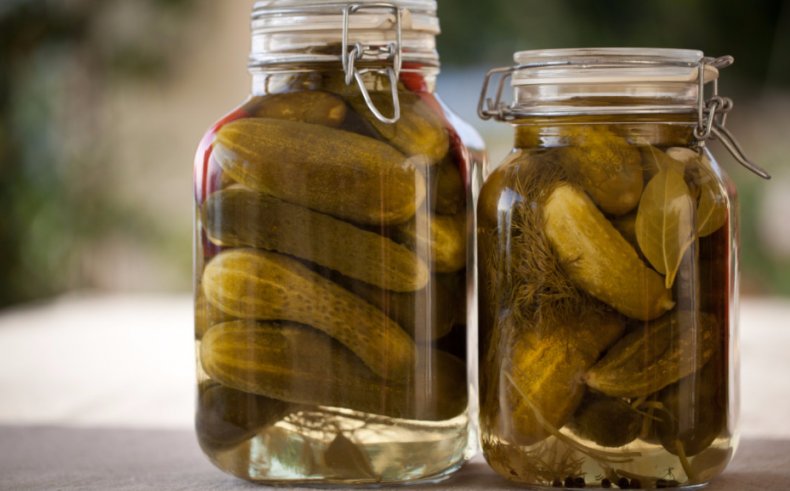
People with reduced thyroid activity, with gouty rheumatism, nephritis and pyelonephritis, pickles are prohibited. Harm can also be obtained with urolithiasis and cholecystitis.
Addiction to salty treats can spoil tooth enamel. It is corroded by the lactic acid produced during fermentation.
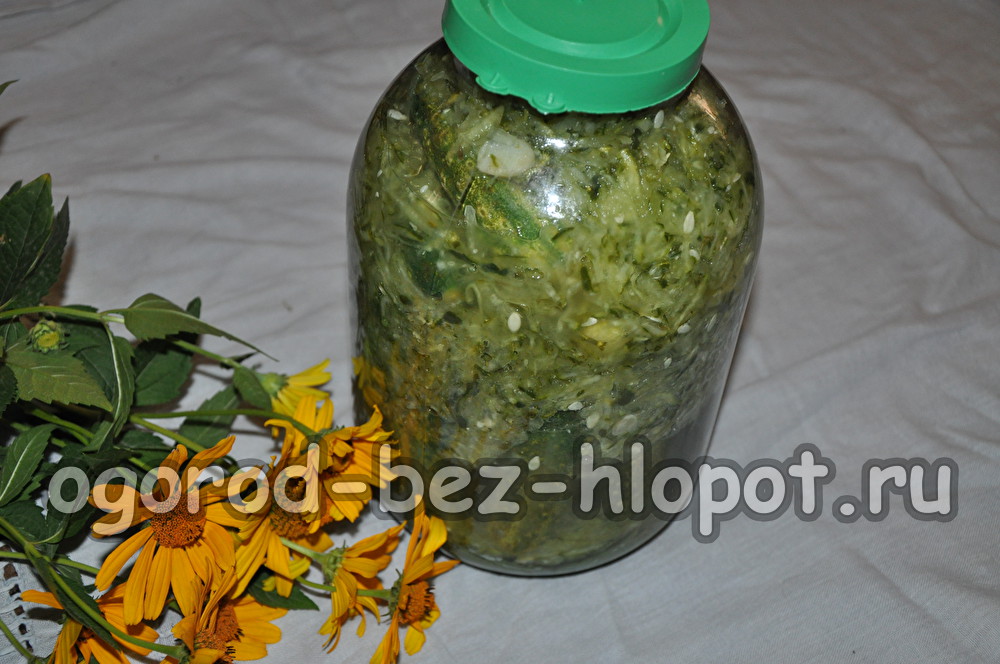 You may be interested in:
You may be interested in:Salting recipes for low-calorie crispy cucumbers
Recipe number 1. On a 3-liter jar you will need:
- thick medium-sized cucumbers;
- garlic - 2-3 cloves;
- cherry twigs - 3 pcs.;
- horseradish leaves - 2 pcs.;
- dill inflorescences - 2 pcs.
- currant leaves - 3 pcs.
For brine:
- 1 liter of purified water;
- 2 incomplete Art. l salt.
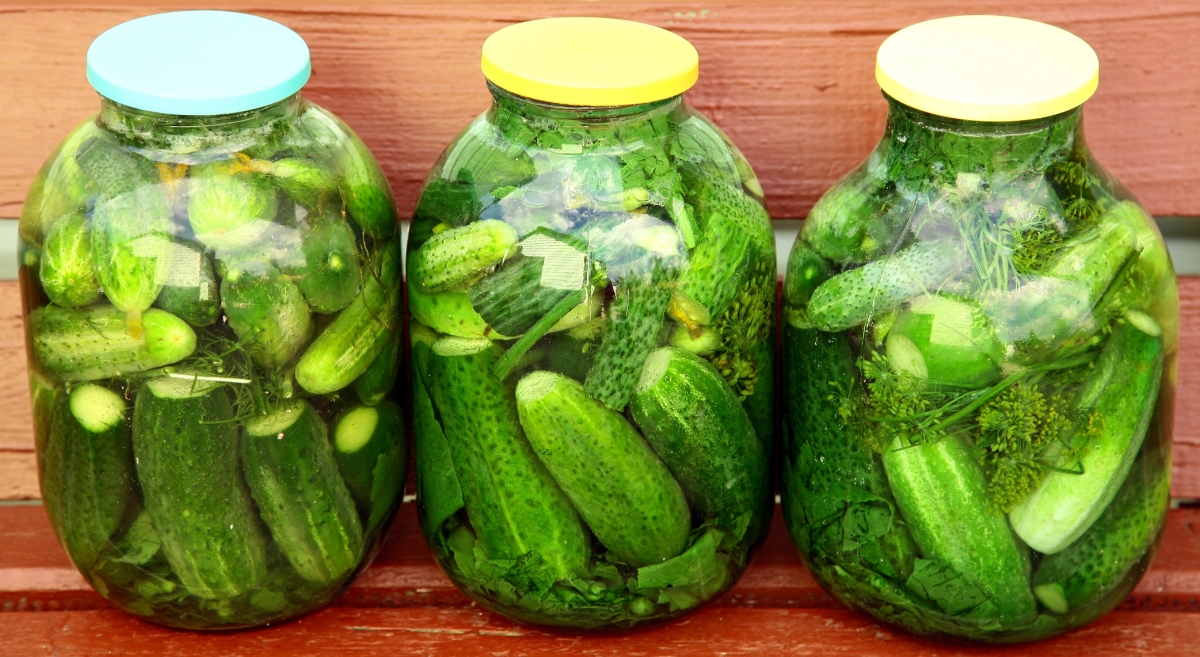
Put greens and garlic sliced in circles at the bottom of the jar, place the fruits, pour in a pre-prepared solution, close the jar with a plastic lid and leave it at a room temperature of no more than + 18 ° С. When the lid swells (cucumbers roam), it must be opened. After 12 hours, you must close the jar again and refrigerate.
Recipe number 2. You will need:
- fresh cucumbers - 5 kg;
- red pepper - 10 g;
- horseradish root - 1-2 pcs.
- head of garlic - 1 pc.;
- marjoram leaves - 5 pcs.;
- tarragon twigs - 2-3 pcs.;
- green dill - 50 g.
For brine:
- water - 5 l;
- salt - 300 g.
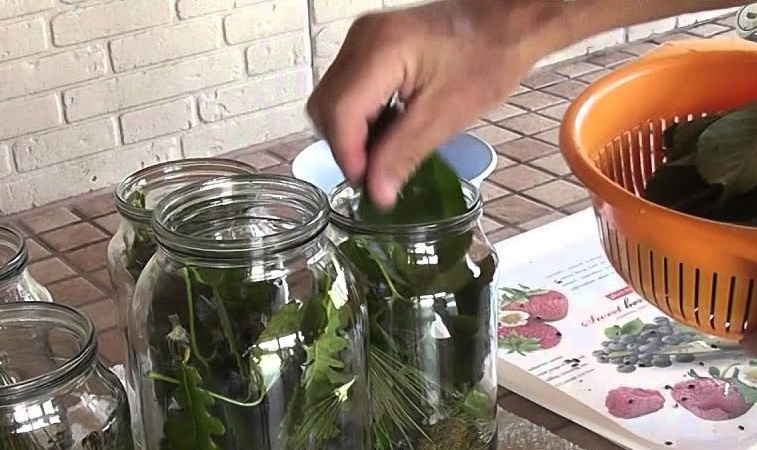
Prepare a brine: boil water, add salt, cool and pass through cheesecloth. Pour the cucumbers completely with water and put oppression on top.
Recipe number 3. You will need:
- fresh pickles - 5 kg;
- dill umbrellas - 5 pcs.;
- cloves of garlic - 5 pcs.;
- currant leaves - 20 pcs.;
- bay leaf - 8 pcs.;
- red and black pepper to taste.
For brine:
- salt - 400 g;
- water - 5 l.
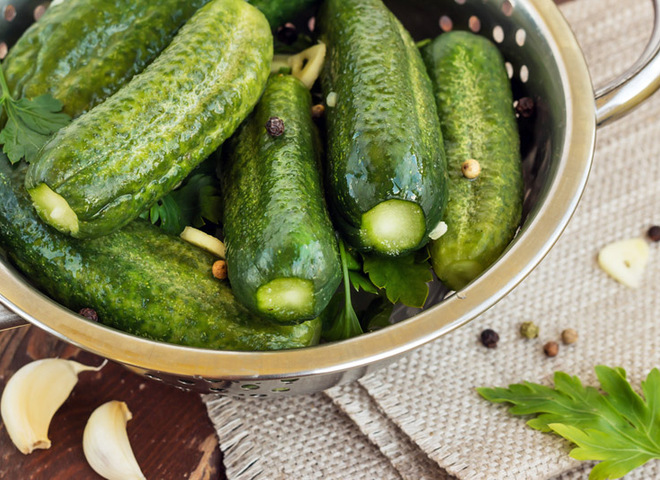
Pour in brine (2 tbsp. L. Salt per 1 liter of water) and leave under oppression for 2 days. Then remove the spices, strain the brine, and rinse the cucumbers. In clean jars, put all the indicated spices and spices (already with bay leaves and pepper), pour hot brine and close the containers with nylon covers.
Answers to Common Questions
Low-calorie pickles have a beneficial effect on digestion and metabolism. They can be included in the daily menu for weight loss, but in comparison with fresh vegetables only in a limited amount, since salt retains fluid in the body. In the absence of contraindications, their moderate use will benefit and diversify the diet.




 Armenian cucumber with melon flavor: description and characteristics, reviews
Armenian cucumber with melon flavor: description and characteristics, reviews Do-it-yourself vertical beds for cucumbers: schemes, photos
Do-it-yourself vertical beds for cucumbers: schemes, photos Hollow cucumbers: reasons for the appearance of hollow, what to do
Hollow cucumbers: reasons for the appearance of hollow, what to do Which manure is best for cucumbers: application, how to breed
Which manure is best for cucumbers: application, how to breed